本期要闻 Highlights of the Month
2020年新修订的《中华人民共和国固体废物废物污染环境防治法》强化了危险废物产生单位在危险废物全生命周期管理中的责任,增大了违法贮存的处罚力度。现行的《危险废物贮存污染控制标准》(GB 18597-2001)发布于20多年前,已无法适应当前我国危险废物环境管理的挑战。
为全面规范我国危险废物贮存活动,控制储存过程的环境污染,生态环境部日前修订、发布了三个危废现场管理相关文件。
《危险废物贮存污染控制标准》(GB 18597-2023)在2001版基础上大幅修改,将贮存设施分为贮存库、贮存场、贮存池、贮存罐区等四种类型,并有针对性提出建设和使用要求。考虑到数量众多的小微产废单位以及部分产废单位具有在生产线附近中转存放危险废物的实际需求,特意增加了贮存点的相关要求,在环境风险可控的前提下,可显著降低建设成本。
《危险废物识别标志设置技术规范》(HJ 1276-2022)规范了危险废物(不含医疗废物)识别标志的分类、内容要求、设置要求和制作方法。识别标志包括危险废物标签,危险废物贮存分区标志和危险废物贮存、利用、处置设施标志三大类。
《环境保护图形标志—固体废物贮存(处置)场》(GB 15562.2-1995)修改单,借鉴《全球化学品统一分类和标签制度》,将危险废物贮存、处置场的警告图形符号由“骷髅”改为“枯树和鱼”。
以上三个规范均自2023年7月1日起实施。
The “Law of the People’s Republic of China on the Pollution Prevention and Control of Solid Wastes” revised in 2020 strengthened the responsibility of hazardous waste generating units in the life cycle management of hazardous waste and increased the penalties for illegal storage. The current “Standard for Pollution Control on Hazardous Waste Storage” (GB 18597-2001) was released more than 20 years ago and is no longer able to meet the current challenges of environmental management of hazardous waste in China.
In order to standardize hazardous waste storage activities and control environmental pollution during the hazardous waste storage process in China, the Ministry of Ecology and Environment recently revised and released three standards for hazardous waste storage management.
“Standard for Pollution Control on Hazardous Waste Storage” (GB 18597-2023) is significantly revised on the basis of the 2001 version, in which storage facilities are divided into four types: storage warehouses, storage yards, storage pools, and storage tank farms, and the corresponding construction and usage requirements are proposed respectively. Considering that many small scale waste generator and some waste generators that have the needs of storing hazardous waste close to the production line, the relevant requirements for storage locations are deliberately increased, to minimize the construction cost of storage facilities while not compromising environmental risk control.
The “Technical Specification for Identification Signs Setting of Hazardous Waste” (HJ 1276-2022) is a new standard, specifying classification, content requirements, setting requirements and preparing methods of hazardous waste (excluding medical waste) identification signs. Identification signs include three categories, i.e., hazardous waste labels, hazardous waste storage zoning signs and hazardous waste storage, utilization, and disposal facility graphic signs.
The revision sheet of “Graphical Signs for Environmental Protection Solid Waste Storage (Disposal) Site” (GB 15562.2-1995), referring to the “The Globally Harmonized System of Classification and Labelling of Chemicals”, changes the warning graphic pictogram of hazardous waste storage and disposal sites from “Skull” to “Dead tree and fish”.
The above three specifications will be implemented from July 1, 2023.
最新国家法律法规 New Regulations
生态环境部:关于做好2023—2025年发电行业企业温室气体排放报告管理有关工作的通知
Ministry of Ecology and Environment: Notice on Effectively Conducting the Reporting and Management of Greenhouse Gas Emissions of Enterprises in the Power Generation Industry from 2023 to 2025
通知要求各省依据《碳排放权交易管理办法(试行)》有关规定,组织开展发电行业企业温室气体排放报告管理有关工作。在通知中更新了2022年度全国电网平均排放因子为0.5703t CO2/MWh(2021年为0.5810 tCO2/MWh)。
The notice requires all provinces to organize the work related to the greenhouse gas emission reports for power generation companies in accordance with the relevant provisions of the “Measures for the Administration of Carbon Emissions Trading (For Trial Implementation)”. In the notice, the average national grid emission factor for 2022 was updated to 0.5703t CO2/MWh (0.5810 tCO2/MWh in 2021).
国家发展改革委等部门:关于统筹节能降碳和回收利用加快重点领域产品设备更新改造的指导意见
National Development and Reform Commission and other departments: Guiding Opinions on Coordinating Energy Conservation, Carbon Reduction and Recycling to Accelerate the Renovation and Transformation of Product Equipment in Key Areas
意见明确了到2025年、2030年的工作目标,提出要以节能降碳为重要导向,推进产品设备更新改造和回收利用。
首批聚焦锅炉、电机、电力变压器、制冷、照明、家用电器6类产品设备,配套印发了更新改造和回收利用实施指南
The Opinions clearly define the goals, by 2025 and 2030, and proposes that energy conservation and carbon reduction be the focus to promote the upgrading and recycling of product and equipment.
The first batch of products and equipment focuses on six categories, such as boilers, motors, power transformers, refrigeration, lighting, and household appliances, and issues supporting guidelines for the implementation of renovation and recycling.
最新国家标准New National Standards
GB 18597-2023危险废物贮存污染控制标准
Standard for Pollution Control on Hazardous Waste Storag
HJ 1276-2022危险废物识别标志设置技术规范
Technical Specification for Identification Signs Setting of Hazardous Wast
GB 15562.2-1995环境保护图形标志—固体废物贮存(处置)场修改单
Graphical Signs for Environmental Protection Solid Waste Storage (Disposal) Site Revised Sheet
立法草案 Policy Initiatives & Developments
Department of Emergency Management: Guidelines for the Investigation and Governance of Safety Risks in Chemical Industry Parks (Revised Consultation Paper)
化工园区安全风险排查治理导则(修订征求意见稿)是对《化工园区安全风险排查治理导则(试行)》(应急[2019]78 号)的修订。
主要修订处包括修改了直接判定为高安全风险(A 级)的条款、明确了安全风险评估和动态调整机制有关要求、修改了化工园区安全风险排查检查表等。意见稿明确了专业安全监管人员配备具体要求,增加了安全隐患排查治理制度相关要求,细化了消防设施建设等要求。
“Guidelines for the Investigation and Governance of Safety Risks in Chemical Industry Parks (Revised Consultation Paper)” is a revision of the “Guidelines for the Investigation and Governance of Safety Risks in Chemical Industry Parks (Trial)” (Ying Ji [2019] No. 78).
The main revisions include modifying the terms of direct classification as high safety risks (level A), clarifying the relevant requirements for safety risk assessment and dynamic adjustment mechanisms, and revising the safety risk screening checklist for chemical industry parks, etc. The consultation paper clarifies the specific requirements for the deployment of professional safety supervision personnel, adds the relevant requirements for the safety hazard investigation and management system, and specifies the requirements for the construction of fire protection facilities.
应急管理部:关于公开征求《个体防护装备配备规范第5部分:建材(征求意见稿)》等3项强制性国家标准意见的函)
Ministry of Emergency Management: Letter on Publicly Soliciting Opinions on 3 Mandatory National Standards including “Specifications for the Provision of Personal Protective Equipment – Part 5: Building Materials (Consultation Paper)”
本函包含以下三项标准的征求意见稿:
《个体防护装备配备规范第5部分:建材(征求意见稿)》、《个体防护装备配备规范 第6部分:电力(征求意见稿)》、《个体防护装备配备规范 第7部分:电子(征求意见稿)》,分行业规定了用人单位个体防护装备(即劳动防护用品)配备的总体要求、危害因素的辨识和评估及个体防护装备的配备。适用于相关行业各用人单位个体防护装备的配备及管理。不适用于消防用个体防护装备的配备及管理。
This letter contains consultation paper for the following three standards:
“Specifications for the Provision of Personal Protective Equipment Part 5: Building Materials (Consultation Paper)”, “Specification for the Provision of Personal Protective Equipment—Part 6: Utility Industry (Consultation Paper)”, “Specification for the Provision of Personal Protective Equipment—Part 7: Electronic Industry (Consultation Paper), which stipulates the general requirements for PPE, the identification and evaluation of hazard factors, and the provision of PPE by industry. Applicable to the provision and management of personal protective equipment for employers in related industries, but not applicable to the provision and management of personal protective equipment for firefighting.
最新地方性法规 Regional Updates
在国家新污染物治理行动方案基础上建立了上海地方的具体工作方案。同时发布了《上海市重点管控新污染物清单(2023年版)》,是第一个发布地方重点管控新污染物清单的省/直辖市。
上海清单与国家清单基本相同,在国家清单14类新污染物的基础上增加了微塑料和双酚A两种污染物。
On the basis of the national New Pollutant Control Action Plan, a local work plan for Shanghai municipality was established. At the same time, the “List of new pollutants under key control in Shanghai (2023 Edition)” was released. Shanghai was the first province/municipality to issue a local key controlled new pollutants list.
The Shanghai list is basically the same as the national list, adding two more pollutants, i.e. microplastics and bisphenol A to the 14 new pollutants in the national list.
通知要求上海市土壤污染重点监管单位应落实污染防治主体责任,严格控制大气和水中有毒有害物质排放,并通过全国排污许可证管理信息平台系统按年度报告排放情况;定期开展土壤,地下水污染隐患排查和日常巡查,建立台账;终止生产经营活动前,应开展土壤和地下水污染调查,编制调查报告,并且通过“上海市企事业单位环境信息公开”一网通办事项进行申报。
The notice requires key soil pollution supervision units in Shanghai to implement the main responsibility for pollution prevention and control, strictly control the discharge of toxic and harmful substances in the atmosphere and water, and report the discharge situation on an annual basis through the national pollutant discharge permit management information platform system; regularly conduct hidden danger investigations and daily inspections of soil and groundwater pollution, and set up ledgers; before terminating production and operation activities, soil and groundwater pollution investigations should be carried out, investigation reports should be prepared, and declarations should be made through the “Environmental Information Disclosure of Enterprises and Institutions in Shanghai Municipality” in the ‘One-stop Online Service.
上海市:上海市电梯安全管理办法
Shanghai Municipality: Measures of the Administration of Shanghai Municipality on Electric Lift Safety
2023版办法是对2015版办法的修订。新办法在明确电梯生产、经营、销售、使用管理、维护保养等单位相应电梯安全责任的基础上,细化电梯使用管理单位的责任。明确其应当制定安全管理制度,建立安全技术档案,开展电梯安全教育培训等。办法对老旧电梯的维护和保养安全做出特别规定。明确电梯使用年限超过15年的,应增加维护保养频次和维护保养项目;电梯达到设计使用年限或者次数后需要继续使用的,应当开展安全评估。针对加装电梯,办法规定了相关环节的责任,使用管理单位,日常巡查等。
The 2023 version of the Measures is a revision of the 2015 version of the Measures. Based on clarifying the corresponding electric lift safety responsibilities of lift production, operation, sales, use management, maintenance and other units, the new Measures refines the responsibilities of lift use management units. The Measures clarifies that lift use management units shall formulate a safety management system, establish safety technical files, and carry out electric lift safety education and training. The Measures regulates specifically on the safety of maintenance of old lifts. It clarifies that if the service life of the electric lift exceeds 15 years, the maintenance frequency and maintenance items should be increased; if the electric lift needs to continue to be used after reaching the designed service life or frequency, a safety assessment should be carried out. For the installation of electric lift, the Measures stipulates the responsibilities of relevant links, use management units, daily inspections, etc.
四川省:四川省重污染天气金属表面处理及热处理加工等10个行业应急减排措施制定技术指南(试行)》
Sichuan Province: Technical Guidelines for the Formulation of Emergency Emission Reduction Measures for 10 Industries Including Heavy Pollution Weather Metal Surface Treatment and Heat Treatment Processing in Sichuan Province (Trial)
技术指南基于四川省产业现状,参照生态环境部《重污染天气重点行业应急减排措施制定技术指南》,对涉气行业绩效分级范围进行了扩展,增加了金属表面处理及热处理加工、肥料制造(除煤制氮肥)、塑料制品、纸浆制造与造纸行业、有机化工、电子行业、汽修行业和通用行业等 10 个行业。
Based on the current situation of industries in Sichuan Province, the Technical Guidelines expands the scope of performance classification of gas-related industries by referring to the “Technical Guidelines on Emergency Management of Mobile Sources of Important Industries in Heavy Air Pollution” issued by the Ministry of Ecology and Environment, adding 10 industries including metal surface treatment and heat treatment processing, fertilizer manufacturing (except coal-based nitrogen fertilizer ), plastic products, pulp manufacturing and paper industry, organic chemical industry, electronics industry, auto repair industry and general industry.
天津市:天津市重点污染物排放总量控制管理办法(试行)
Tianjin Municipality: Administrative Measures for the Total Discharge Control of Key Pollutants in Tianjin (Trial)
办法明确天津市实施排放总量控制的重点污染物为氮氧化物、挥发性有机物、化学需氧量、氨氮。
办法尝试建立重点污染物排放总量指标储备与动态调控机制。在条件比较成熟的行业开展排污权交易试点,实施建设项目新增总量指标差异化替代。
The Measures clarifies that the key pollutants for the implementation of mass load quota control in Tianjin Municipality are nitrogen oxides, volatile organic compounds, chemical oxygen demand, and ammonia nitrogen.
The Measures tries to establish an index reserve and dynamic control mechanism for the mass load quota of key pollutants. In industries with relatively mature conditions, it requires those industries to carry out pilot projects for emission rights trading and implement differentiated replacement of new mass load quota for construction projects.
本法规月刊是由伊尔姆环境资源管理咨询(上海)有限公司(ERM)、Nimonik 安纬同(上海)管理咨询有限公司(Nimonik)与大成律师事务所上海分所(Dentons Shanghai)联合制作。我们在确保其内容准确无误的同时,不对其任何可能的错误或疏忽承担责任。本刊中的内容不可作为法律依据,亦不可视为对个案的释义。因参考本刊物内容导致的任何损失,ERM, Nimonik 与大成律师事务所将不承担任何责任。如需寻求专业意见,请咨询有关专业顾问。
This newsletter is prepared for clients and professional associates by ERM, Nimonik and Dentons Shanghai. Whilst every effort has been made to ensure accuracy, no responsibility can be accepted for errors and omissions, however caused. The information contained in this newsletter should not be relied on as legal advice and should not be regarded as a substitute for detailed advice in individual cases. No responsibility for any loss occasioned to any person acting or refraining from action as a result of material in this newsletter is accepted by ERM, Nimonik or Dentons Shanghai. If advice concerning individual problems or other expert assistance is required, the services of a competent professional adviser should be sought.






 沪公网安备31010602007801
沪公网安备31010602007801